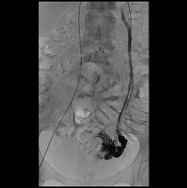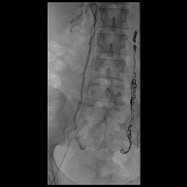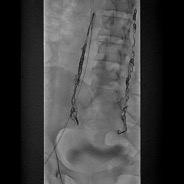 This week we spoke to Dr Sanjay Nadkarni. Dr Nadkarni is a vascular interventional radiologist with over 15 years’ experience in minimally invasive treatment of vascular conditions, pain management and regenerative and orthobiologic treatments.
This week we spoke to Dr Sanjay Nadkarni. Dr Nadkarni is a vascular interventional radiologist with over 15 years’ experience in minimally invasive treatment of vascular conditions, pain management and regenerative and orthobiologic treatments.
According to the Society of Interventional Radiology, “it is estimated that one-third of all women will experience chronic pelvic pain in their lifetime”. Many of these women are told the problem is “all in their head” but recent advancements now show the pain may be due to varicose veins in the pelvis, known as pelvic congestion syndrome.
The causes of chronic pelvic pain are varied, but are often associated with the presence of ovarian and pelvic varicose veins. Pelvic congestion syndrome is similar to varicose veins in the legs. In both cases, the valves in the veins that help return blood to the heart against gravity become weakened and don’t close properly, allowing blood to pool in the pelvis causing pressure and bulging veins.
Prevalence
- Women with pelvic congestion syndrome are typically less than 45 years old and in their childbearing years.
- Ovarian veins increase in size related to previous pregnancies. Pelvic congestion syndrome is unusual in women who have not been pregnant.
- Chronic pelvic pain accounts for 15 percent of outpatient gynecologic visits.
- Studies show 30 percent of patients with chronic pelvic pain have pelvic congestion syndrome (PCS) as a sole cause of their pain and an additional 15 percent have PCS along with another pelvic pathology.
Risk Factors
- Two or more pregnancies and hormonal increases
- Fullness of leg veins
- Polycystic ovaries
- Hormonal dysfunction
Symptoms
The chronic pain that is associated with this disease is usually dull and aching. Pain is usually felt in the lower abdomen, pelvis and lower back and is described as heaviness, dragging, radiating to the tailbone, buttocks and thighs. The pain often increases:
- Following intercourse
- During the menstrual cycle
- When tired or when standing (worse at the end of the day)
Other symptoms may include:
- Frequency of urination
- Varicose veins on vulva, buttocks or thigh.
Diagnosing Pelvic Congestion Syndrome
An interventional radiologist may use the following imaging techniques to confirm pelvic varicose veins that could be causing pelvic pain.
1) CTV – objective method. Useful for evaluation of the anatomy pre-procedure
2) Pelvic Ultrasound – subjective but can be diagnostic if done well by an experienced sonographer.
3) Pelvic venogram – done at the time of embolisation or in cases where the symptoms are present but the CTV and ultrasound are negative.
4) Computed tomography venography – More objective and gives a good overview of size of ovarian and pelvic veins and any other pelvic pathology, but does involve giving intravenous contrast and radiation.
Treatment Options
Conservative treatment
Analgesics may be prescribed to reduce the pain. Hormones such birth control pills decrease a woman’s hormone level causing menstruation to stop may be helpful in controlling symptoms.
Interventional Radiological Treatment
Ovarian Vein Embolisation
Surgical
Depending on surgeons’ preferences, surgical options include a laparoscopic or an open operation, tying off or removing the veins.
What is ovarian vein embolisation
This is a minimally invasive procedure. In addition to being much less invasive, embolisation offers a safe and effective treatment. It is technically successful in 95-100 percent of cases. A large percentage of women improve in their symptoms (85-95%) after the procedure. In some cases vulval and leg veins may require further treatment.
During the procedure, a thin catheter is inserted into the femoral vein in the groin and is guided to the affected pelvic vein using X-ray guidance. To seal the faulty and enlarged vein, tiny coils and a sclerosing agent (the same type of material used to treat varicose veins) are used to close the vein. After treatment, patients may return to normal activities within a few days.





